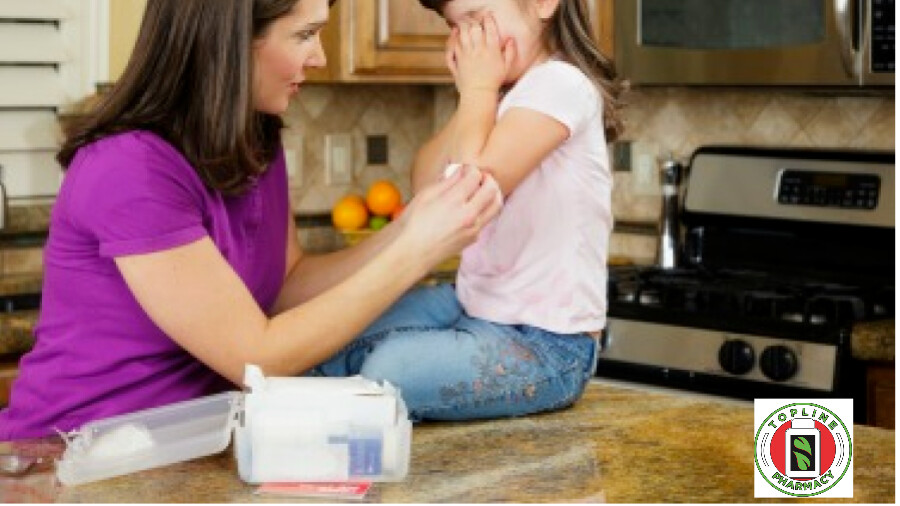Complete Guide on children first aid and health
As they’re running around the house, park or playground, small knocks, bumps and grazes are an inevitable part of growing up. Most of the time you can deal with minor accidents or injuries with some simple first aid and any help you need from our pharmacy’s team. That’s why we’ve put together our top tips about what to do for the most common children’s minor ailments.
Your first aid kit
To be prepared for any eventuality, it’s a good idea to keep a well-stocked first aid kit handy. Make sure it’s out of children’s reach and check the medicines are in date on a regular basis.
What do I need in my first aid kit?
The NHS recommends that your first aid kit contains items such as plasters, scissors and bandages, along with alcohol-free cleansing wipes and cream or spray to relieve insect bites or stings. It’s also a good idea to have some antiseptic cream to hand, as well as children’s paracetamol or ibuprofen.
You may also want:
- Plasters
- Thermometer
- Antiseptic cream
- Paracetamol
* Visit Topline pharmacy @ 4400 W Loop 250 frontage Ste 102, Midland TX 79707 for all these products.
What to do for a cut or graze? So long as the cut isn’t serious, you can help your child bounce back by following these three easy steps:
Stop the bleeding
Press firmly on the area with a clean cloth or flannel, and if the cut is on the hand or arm raise it above the head to help stop bleeding. If it’s on the legs, lie them down and raise their leg above the level of their heart.
Clean the wound
When the injury has stopped bleeding, clean the wound under running tap water and pat the area dry with a clean towel. Avoid using an antiseptic cream as it may damage the skin and slow healing.
Apply a dressing
Like a plaster, waterproof dressings are handy if you need to keep the wound dry while bathing and showering. The dressing can be removed once the wound has healed.
First aid for burns
If your child has a minor burn, try to act quickly and calmly. It it’s a severe burn, or your child is under 5 years old. Contact us on 432-287-5620 or visit the nearest hospital.
The NHS advises treating burns by:
- Move away from the heat source
- Cooling the burn with cool or lukewarm water for 20 minutes
- Remove any clothing that’s near the burnt area
- Make sure your child stays warm, using a blanket for example
- Use pain relief, such as paracetamol or ibuprofen if needed
- If the burn is to the face or eyes, make sure your child is sitting up to help reduce swelling
-
For a minor burn, keep the burn clean and don’t burst any blisters that form

